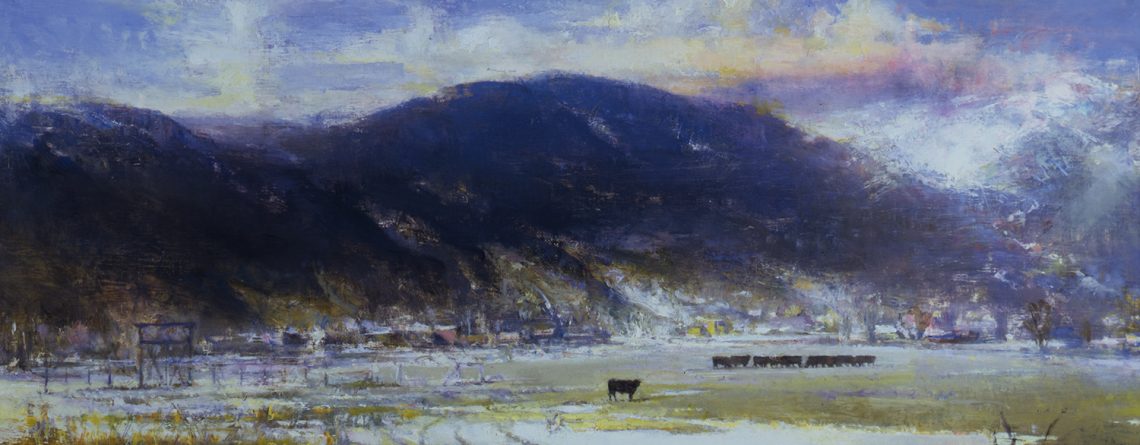Muddy and Chalky Color
How can I make corrections on my painting without causing muddy or chalky color?
Muddy and chalky color problem: “Where I run into trouble …. a painting is a series of corrections…..when I correct, the paint gets contaminated. It begins to look over-worked or milky. And if I work on it long enough then I have successfully made the whole painting into one value of greasy muddiness!”
Muddy & Chalky Color
Muddy and chalky color is a problem of paint application, not of contamination of color. Some of the most beautiful masterpieces in history contain colors that are mixed rather than pure color straight from the tube. When a color occupies a finite space and is applied with a definite brushstroke, it can’t be muddy or chalky. Muddiness and chalkiness happen when a brushstroke is blended to a point where it has no discernible boundary and no shape. Then, because the edges are vague, the eye perceives the color as muddy or chalky because it can no longer be identified as a color. If the color is light, then the perception is that it is chalky; if it is dark it seems muddy. Muddiness and chalkiness are the same problem in different value ranges.
Brush Control
Learning brush control will help you avoid muddiness and chalkiness. Having brush control means that you are able to use the same brush to paint a light stroke as well as a dark stroke, and doing this without cleaning your brush with a solvent in between. Instead just wipe the excess paint onto a rag or paper towel. For example, you could use the same brush to paint a dark mountain and the sky behind it. You can do this without cleaning the dark mountain color out of the brush before applying the light sky color.
The trick to painting two very different values with the same brush is to pick up enough paint on your brush. This is the mistake most painters make. They economize when using paint. They end up ‘scrubbing’ the surface which forces the color in the brush hairs to mix with the surface paint on the canvas. The result often appears muddy or chalky. If you load your brush with paint, you are then able to lay dark paint over light and vice versa without picking up the underneath color. With practice, you too will be able to develop a light enough touch. You can deposit paint and not pick up what is underneath.
Keep Practicing
If you find this level of brush control difficult, keep practicing. Otherwise, you will have to have separate brushes for every color in your painting. This method is cumbersome and does not foster learning to mix and control the color of the painting.

Give it a shot! Use paint fearlessly and you will learn how to manipulate paint to get what you are after.
If you want to learn more and get access to my YouTube videos, join our free membership at The Artists Guild!


Leave a Reply
You must be logged in to post a comment.